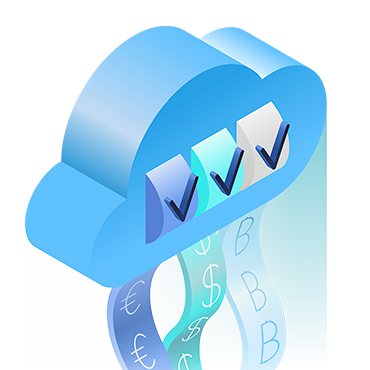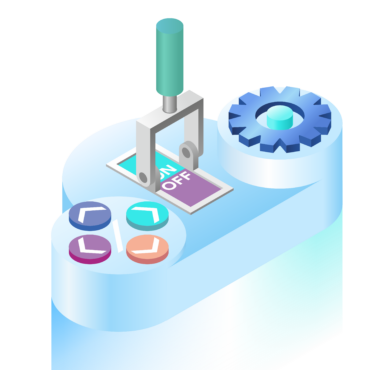Unveiling the Power of MapReduce in Big Data Handling
Updated 27 Apr 2024
In today’s era of vast data influx, the significance of MapReduce in streamlining big data processing cannot be overstated. Let’s delve into what MapReduce is and how it transforms the handling of massive datasets, touching upon its core principles, applications, and pivotal features.
Understanding MapReduce
MapReduce simplifies the complexities of processing large datasets by breaking down tasks into two primary phases: mapping and reducing. Here’s how it works:
Mapping Phase: In this initial phase, the input data is divided into smaller chunks and processed simultaneously across multiple nodes within a cluster. Each node executes a mapping function, processing a subset of the data and generating intermediate key-value pairs.
Reducing Phase: Following the mapping phase, the intermediate key-value pairs are consolidated based on their keys. Data with the same key is grouped together, and a reducing function is applied to each group to produce the final output. This phase involves tasks like summarization and aggregation to derive meaningful insights from the processed data.
Key Components and Frameworks
MapReduce is typically implemented using frameworks like Apache Hadoop, which provides the infrastructure for distributed storage and processing of large datasets. The key components include:
Hadoop Distributed File System (HDFS): A distributed file system that serves as the underlying storage layer, enabling efficient data storage and retrieval.
MapReduce Framework: This framework facilitates the execution of mapping and reducing tasks across distributed clusters, ensuring seamless parallel processing.
Applications and Use Cases
MapReduce finds extensive applications across various domains, offering solutions to complex data processing challenges. Some common applications include:
Data Analytics: Organizations leverage MapReduce for tasks such as data cleaning, log processing, and sentiment analysis to extract actionable insights from large datasets.
Information Retrieval: MapReduce aids in efficiently processing and analyzing vast amounts of textual data, enabling effective information retrieval and indexing.
Machine Learning: MapReduce plays a crucial role in processing training data and executing machine learning algorithms, facilitating model training and prediction tasks at scale.
Advantages of MapReduce
The widespread adoption of MapReduce can be attributed to several key advantages:
Scalability: MapReduce scales linearly with the size of data and the number of nodes in the cluster, making it suitable for handling datasets of any scale, from gigabytes to petabytes.
Fault Tolerance: MapReduce ensures fault tolerance by automatically rerunning tasks on other nodes in the event of hardware failures, ensuring uninterrupted data processing.
Flexibility and Programmability: Developers can write custom map and reduce functions tailored to specific processing needs, providing flexibility and customization options for diverse use cases.
Example Scenario
Consider a scenario where a retail company aims to analyze sales data from multiple stores across different regions. By employing MapReduce, the company can efficiently process and aggregate sales data, deriving insights such as top-selling products, sales trends, and regional performance metrics.
Example Scenario: Optimizing Learning Pathways with MapReduce in an EdTech Company
Let’s delve into the operations of “EduTrek,” an EdTech company dedicated to revolutionizing online learning experiences. EduTrek offers a diverse range of courses, from STEM subjects to humanities, catering to learners of all ages and levels. To ensure personalized learning pathways and optimize course offerings, EduTrek leverages MapReduce for data processing and analysis.
Utilizing MapReduce for Course Personalization:
User Engagement Analysis: EduTrek collects vast amounts of data on user interactions with its platform, including course enrollments, lesson views, quiz attempts, and completion rates. By employing MapReduce, the company processes this data to gain insights into user engagement patterns. The map phase analyzes individual user actions, while the reduce phase aggregates and summarizes engagement metrics across the platform.
Learning Pathway Recommendations: Based on the user engagement analysis, EduTrek utilizes MapReduce to recommend personalized learning pathways to each student. By correlating user preferences, performance data, and course prerequisites, the company identifies relevant courses and learning sequences tailored to individual learning objectives. The map phase identifies user preferences and performance indicators, while the reduce phase generates personalized learning recommendations.
Content Optimization: EduTrek continuously evaluates the effectiveness of its course content and instructional materials to ensure high-quality learning experiences. With MapReduce, the company analyzes user feedback, assessment results, and content usage metrics to identify areas for improvement. The map phase processes feedback and assessment data, while the reduce phase aggregates and analyzes the data to inform content optimization strategies.
Benefits of MapReduce in EdTech:
Scalability: MapReduce allows EduTrek to process and analyze large volumes of user data efficiently, enabling scalability as the platform grows.
Personalization: By leveraging MapReduce, EduTrek can deliver personalized learning pathways tailored to each student’s interests, preferences, and learning objectives.
Data-Driven Decision-Making: MapReduce empowers EduTrek to make data-driven decisions regarding course offerings, content development, and instructional strategies, leading to continuous improvement and innovation.
Conclusion
MapReduce stands as a foundational technology in the realm of big data processing, offering scalable, fault-tolerant, and customizable solutions to handle the challenges of modern data processing. As organizations continue to grapple with the deluge of data, MapReduce remains a vital tool for unlocking insights and driving informed decision-making.


